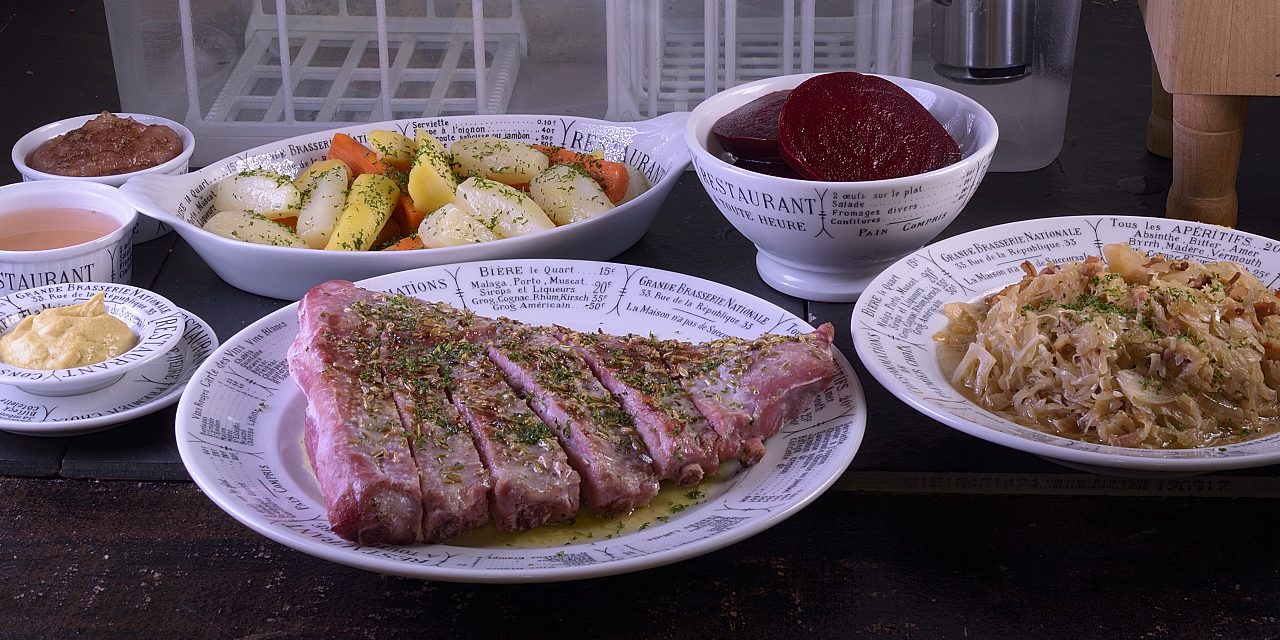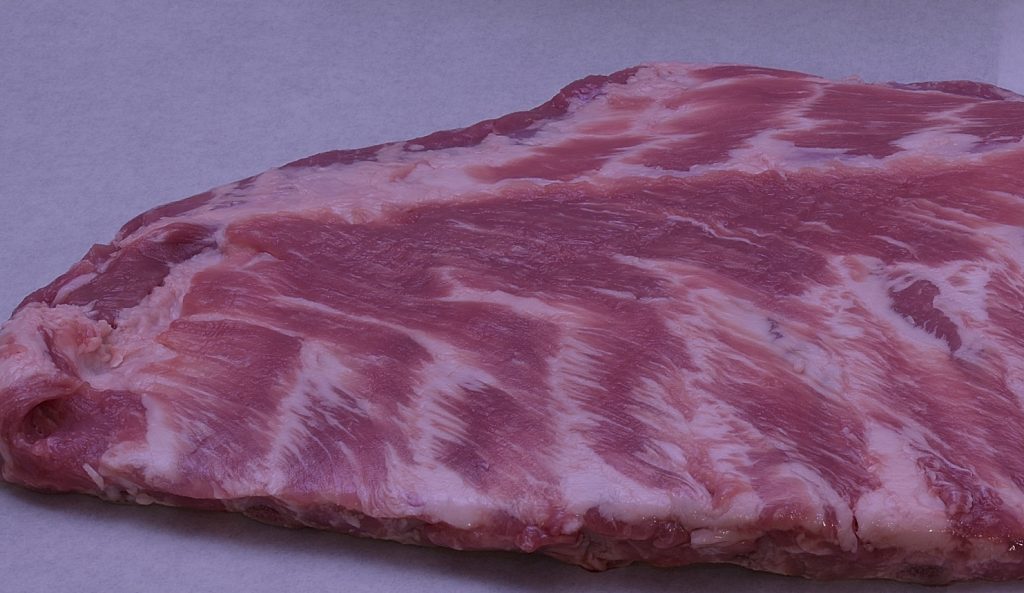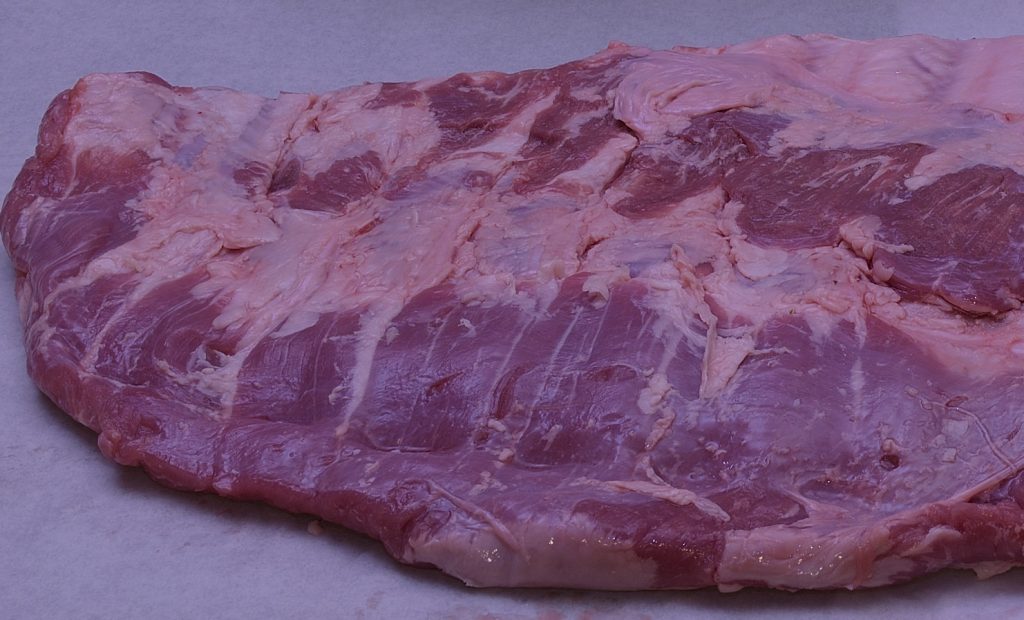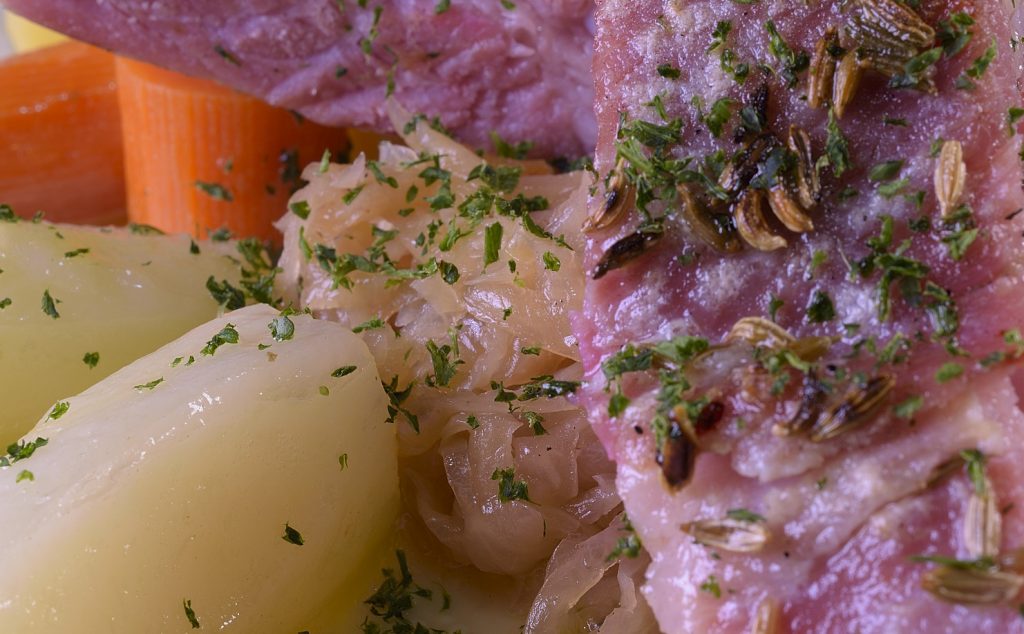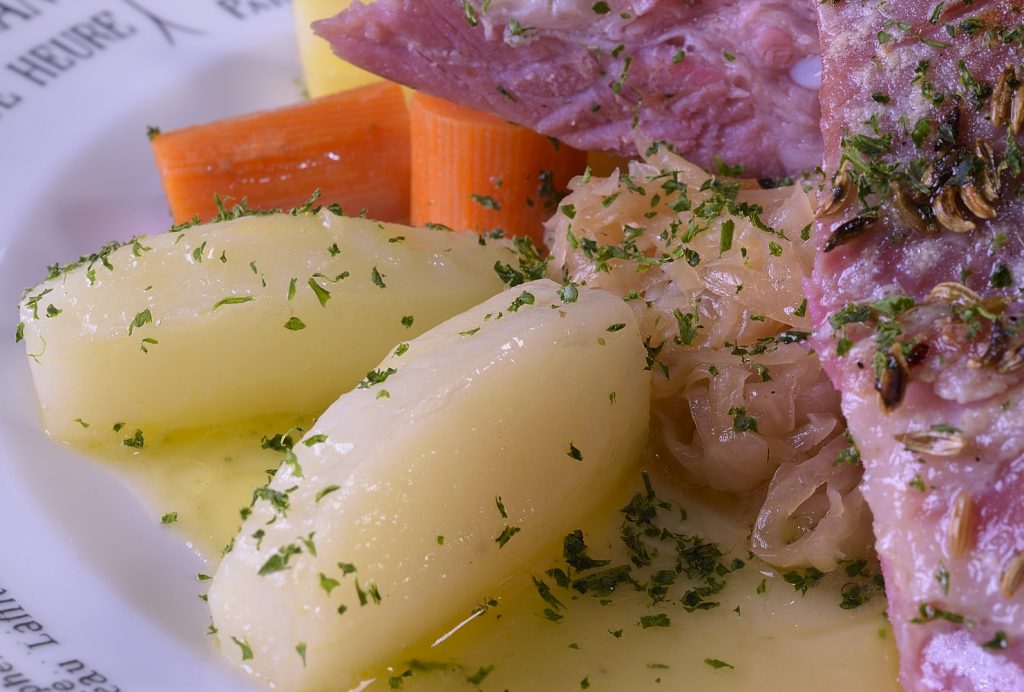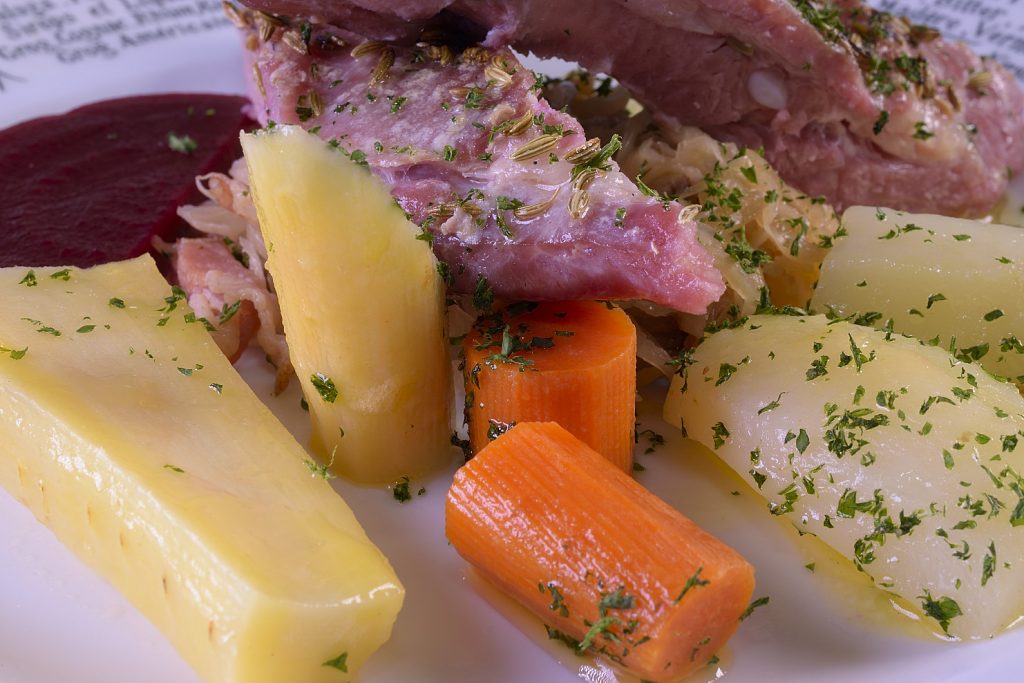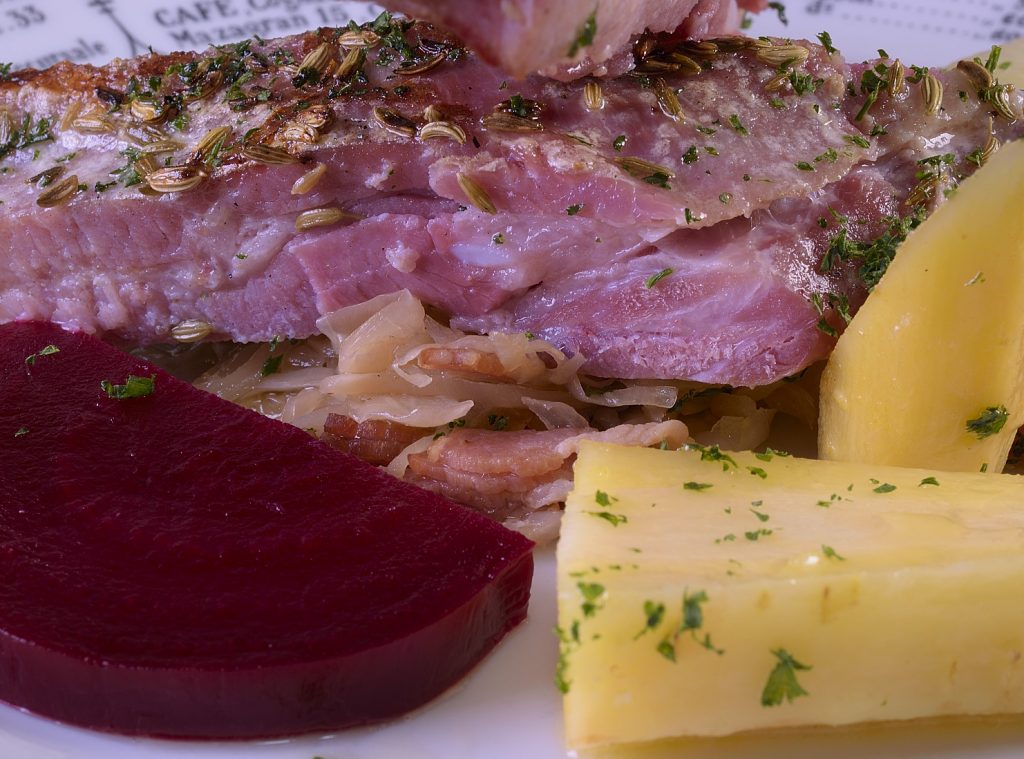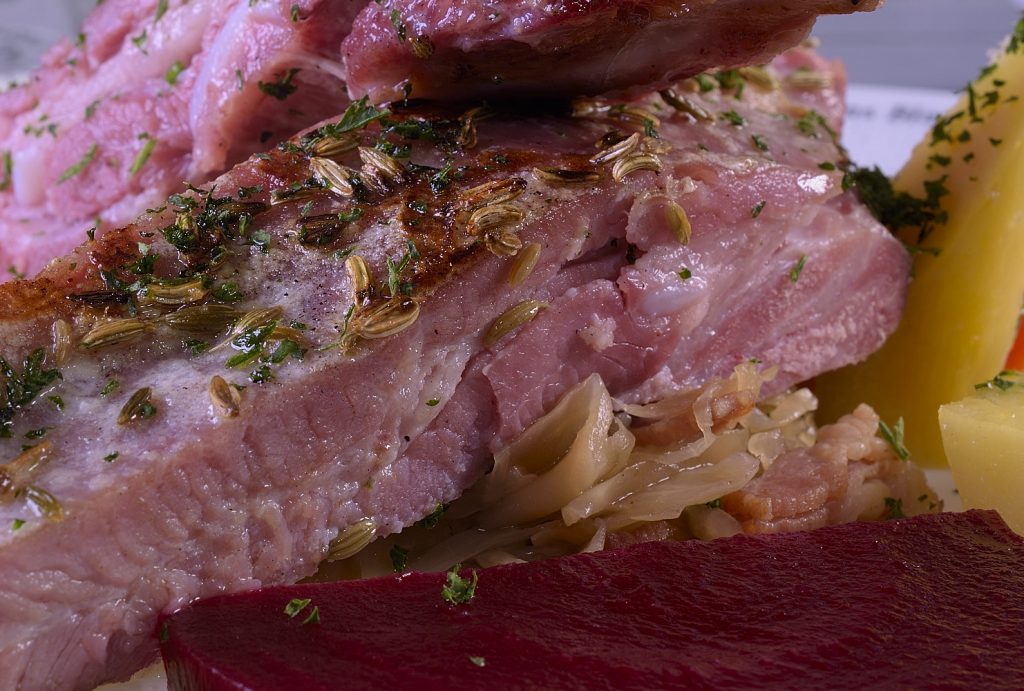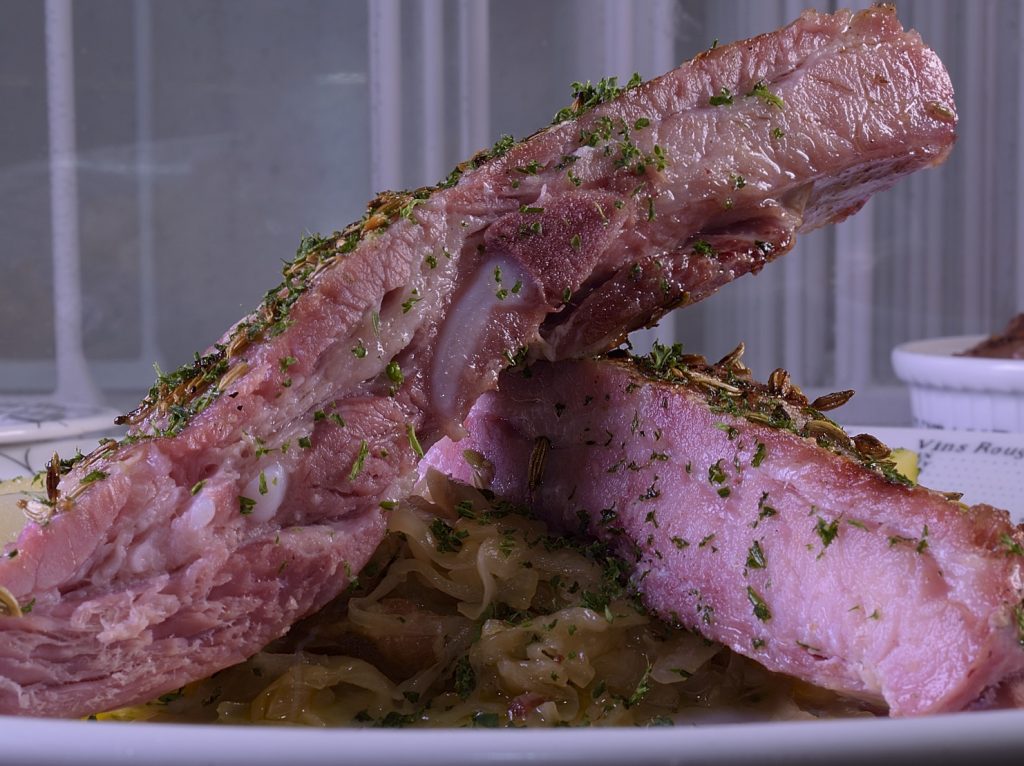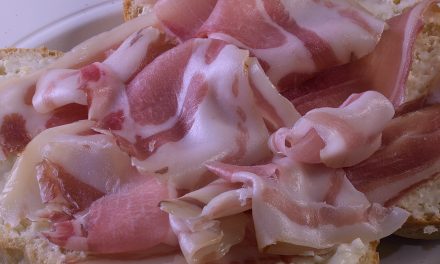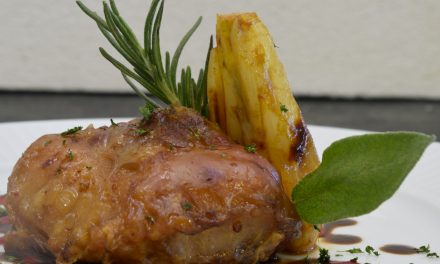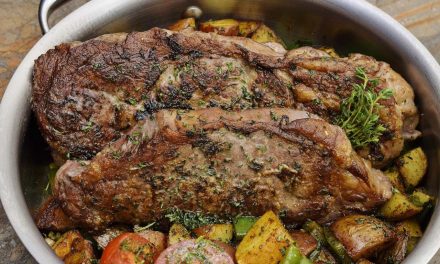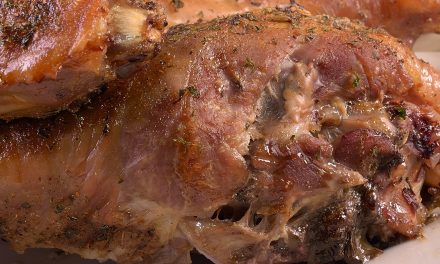“Pick a cool and breezy month…”
We’ve used sous vide and Sous-B-Q to process a lot of spare ribs over the years–here, in our SVR Facebook Group and on Lipavi.com. Obviously, this particular item is inextricably linked to the various types of BBQ and vice versa. When other cultures prepare spare ribs, they also lean towards using some form of slow roasting or smoking. Chinese, Korean, Japanese and many other “ethnic” restaurants usually have their own versions. It’s hard to imagine getting burned out on BBQ spareribs, but I suppose it’s possible. Breakfast cooks become oblivious to bacon and steak house line cooks lose interest in Prime Rib and T-bones. We decided to break the mold and see if we could use sous vide to adapt this popular cut to a novel preparation–Corned (Cured)…
Most of us are familiar with corned beef, but there is a bit of confusion about what the “corned” part of corning actually means. Corned beef (or pork, in this case) is cured just like any number of other products like bacon and ham, and there isn’t a single kernel of corn in any of them. The term “corned” is an archaic reference to the seeds that were included in the traditional seasoning process–usually things like coriander and, ah, yes, “peppercorns.” Actually, these components never did play any role in the chemistry of curing the meat, but back then food science just wasn’t as fact driven as it is now.
Prague Powder–a little bit of history
Curing meats is an ancient practice commonly used long before Prague, Czechoslovakia existed, at least by its present name. Even so, Prague is generally considered to be where the practice of using sodium nitrate to preserve meats was standardized. You see, they didn’t have refrigeration back then. Without going down the rabbit hole, we will just note that the use of sodium nitrite is safe provided it is used in precisely measured amounts. For more details about Prague powder, visit the informative article linked HERE.
Ingredients/procedure, part 1:
Pork spare ribs, 2 lbs./1 Kg. I like to use the belly end, but any section will work.
The cure:
Prague powder (#1): this amount must be precisely measured–3 grams/0.5 teaspoons.
Kosher salt, 24 grams. About 4 teaspoons/1.5 Tablespoons.
Sugar, granulated, 12 grams, just slightly less than 1 Tablespoon.
Combine the Prague powder, the kosher salt and the sugar and mix well. Use gloved hands to sprinkle evenly over the entire surface of the spareribs. Massage to make sure all of the cure attaches itself to the meat. Vacuum seal the ribs in a sous vide pouch and refrigerate for 48 hours to activate the cure.
Note: Many practitioners advocate the use/inclusion of marinades, flavorings, herbs, spices, oils, etc. in the sous vide package. The well established scientific evidence indicates that nothing other than sodium ions (salt) can penetrate the surface of land/air dwelling proteins so we do not typically include any. This is explained in excruciating detail HERE.
Once the 48 hours have elapsed, preheat the sous vide bath to:
140 F/60 C.
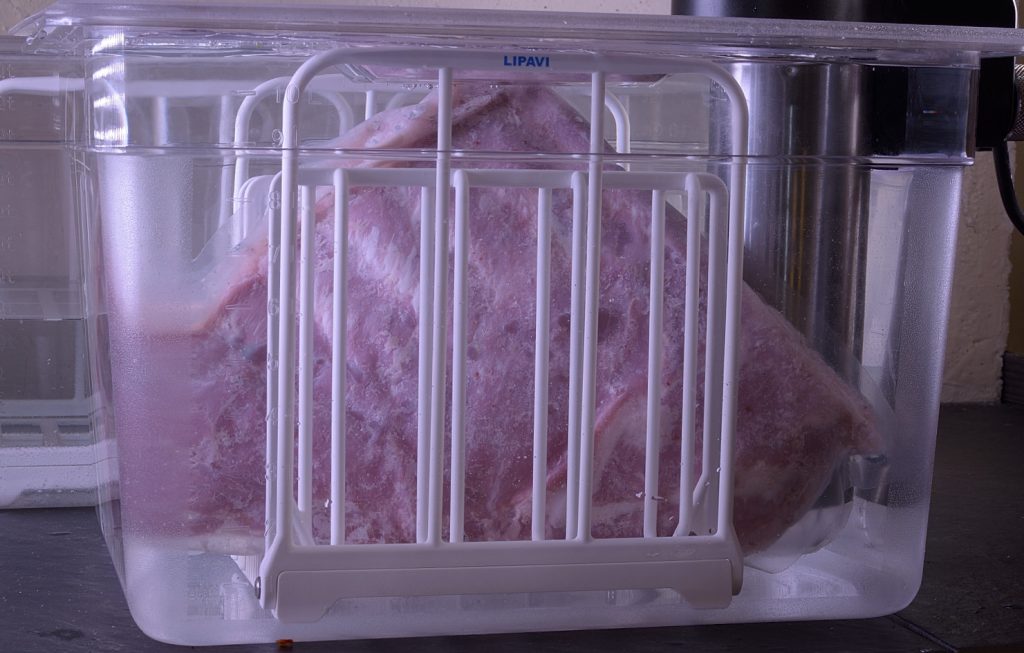
Set the timer to 24 hours to assure pasteurization AND tenderization. Vacuum sealed in a heat rated bag, the package is staged into an appropriate rack and lowered into the preheated bath. Always cover with an appropriate lid.
Finishing the Spareribs
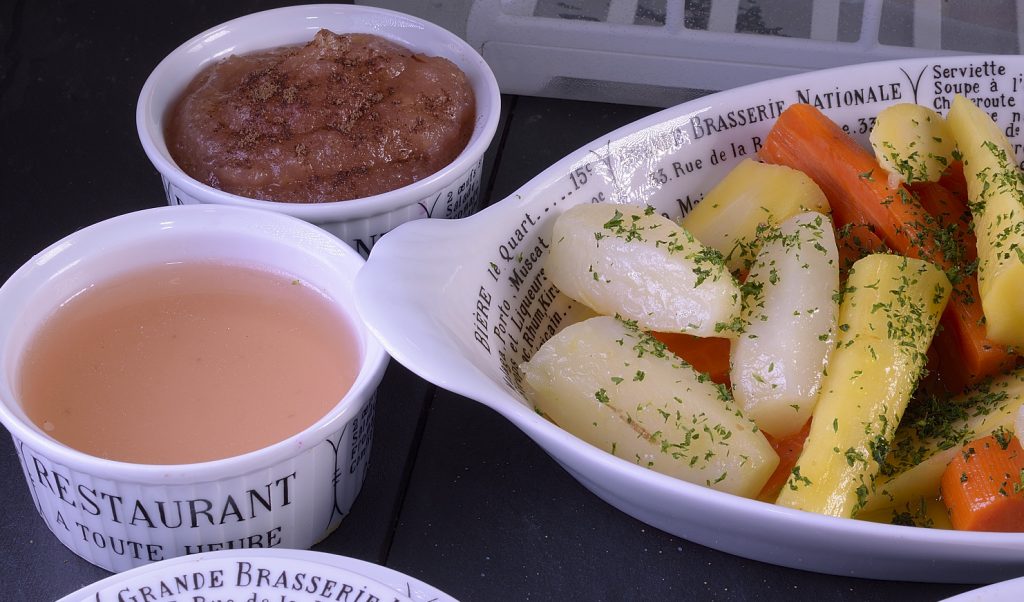
Once the interval is completed and the ribs are tenderized to your liking, harvest the juices (seen on the left) and strain through a moistened paper towel as explained HERE.
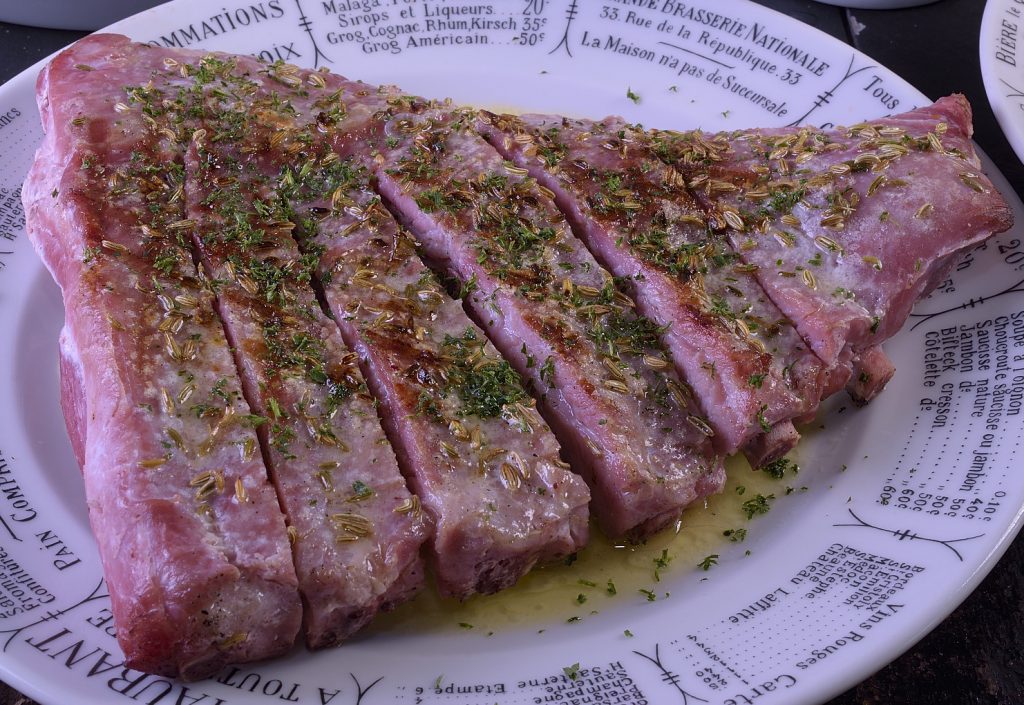
The ribs can be served as is but we chose to create a light surface treatment. No additional salt is required so we dusted lightly with powdered egg white, misted lightly with water to create a sticky surface and sprinkled with fennel seeds, a sort of Provencal touch. Mist or drizzle with a small mount of oil and lightly grill in a cast iron broiler pan. Also great smoked in the backyard barbecue!
What about all the other stuff?
While the spare ribs are processing, assemble the other components.
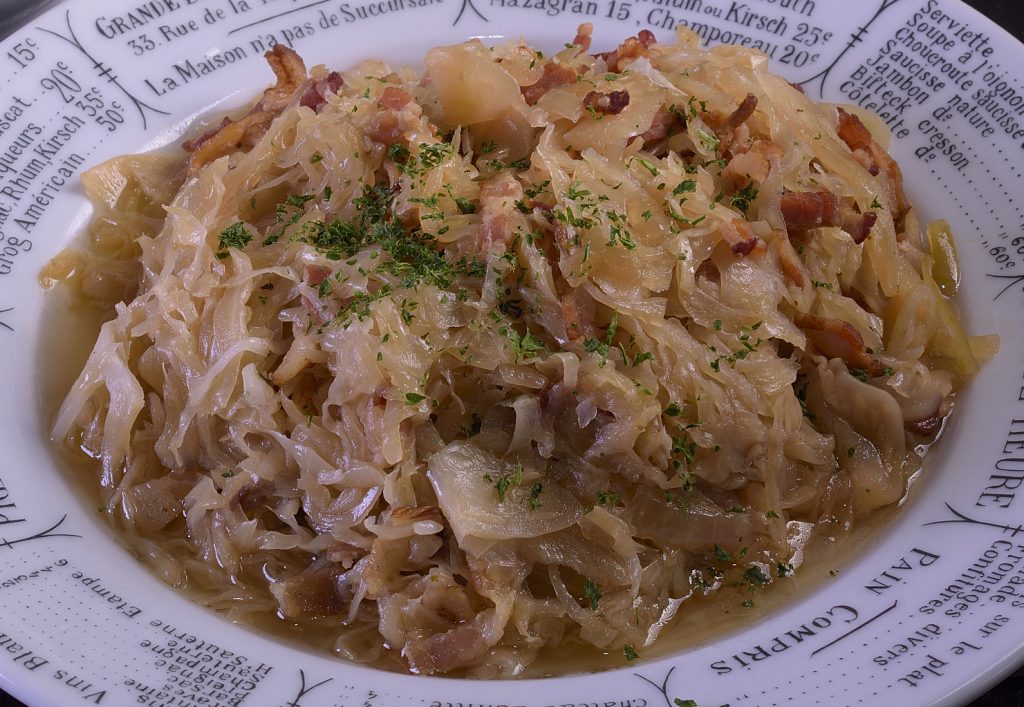
Vacuum cured “instant” sauerkraut:
Ingredients:
Cabbage, 0.5 heads, sliced as thin as possible.
Kosher salt, 2 oz/60 g.
Put the shredded cabbage and the salt in a Ziploc bag and jostle well. Allow to rest at room temperature for 2 hours. This will wilt the cabbage and cause it to release some juices. Stage the cabbage into a large bowl of cold water to wash off the excess salt and drain well. Wrap the cabbage in a clean kitchen towel and vacuum in a sous vide pouch. Allow at least one hour to fully remove the juices. In this state, the cabbage can also be kept overnight or until you are ready to proceed to the next step. On the day of service, you will also need:
Bacon, 6 oz/175 g, sliced thin.
Onions, 0.5 each, chopped fine.
Vinegar, white, 0.5 cups/125 ml.
On the day of service, unwrap the cabbage and stage into a bowl. Fry the bacon until crisp. Add the onions and fry until softened. Lower the heat, add the vinegar and cabbage and loosely cover. Braise/simmer for one half hour.
Ingredients/procedure, cont’d.
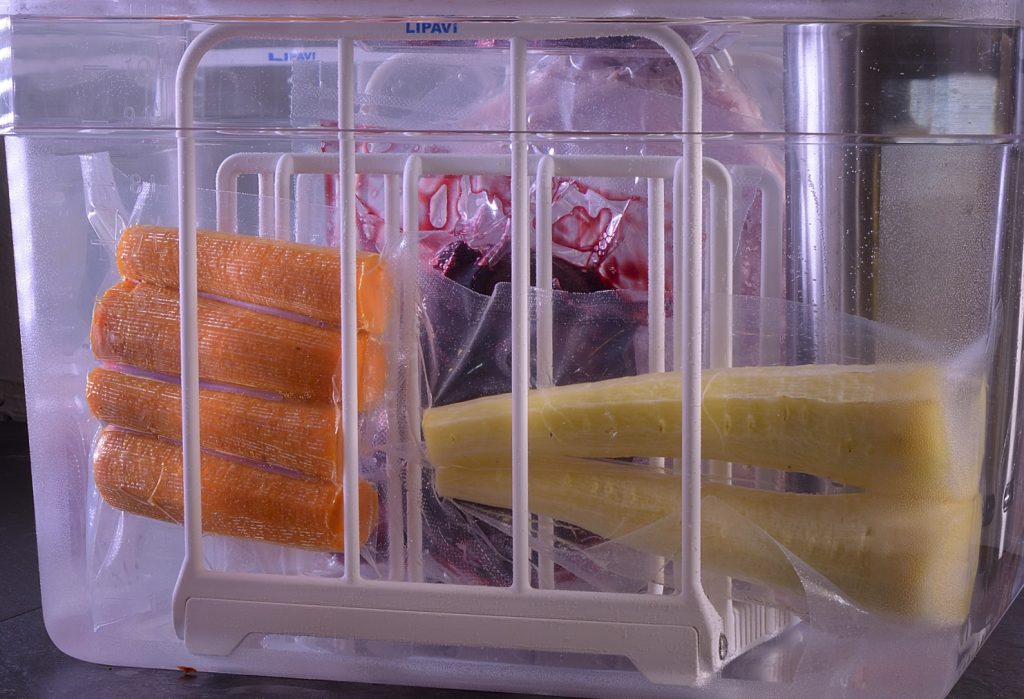
Carrots, 2 each, peeled.
Parsnips, 2 each, peeled.
Beets, 1 large or two small.
Potatoes, russet, peeled and cut into desired shapes.
Preheat a sous vide bath to:
183 F/84 C.
Vacuum seal the vegetables separately and process until tender–usually about an hour. Allow the beet(s) 2 hours.
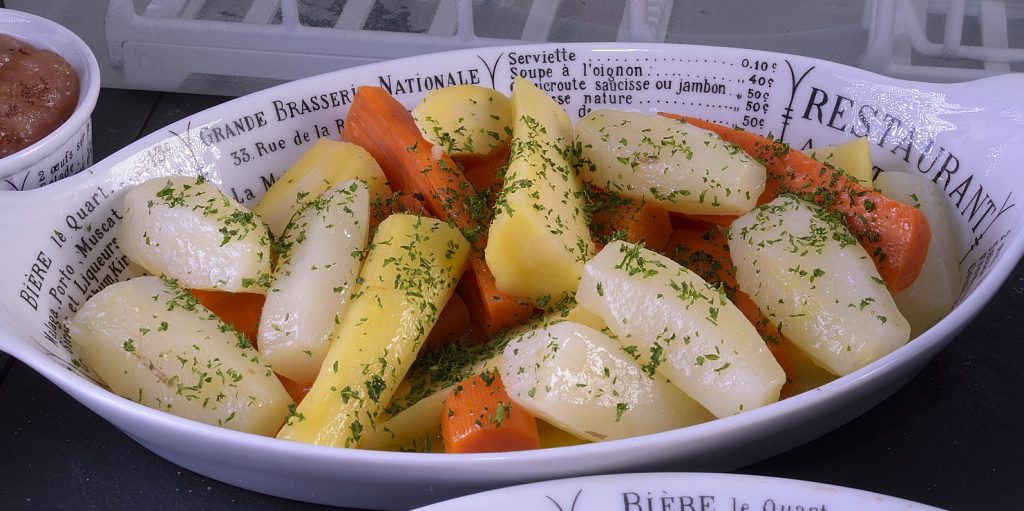
Once completed, the vegetables can be served immediately if your timing is that good. Alternately, they are cold shocked in iced tap water until they achieve 70 F/21 C, refrigerated at 40 F/4 C until day of service and then reheated. Served with butter, salt and white pepper, and chopped parsley.
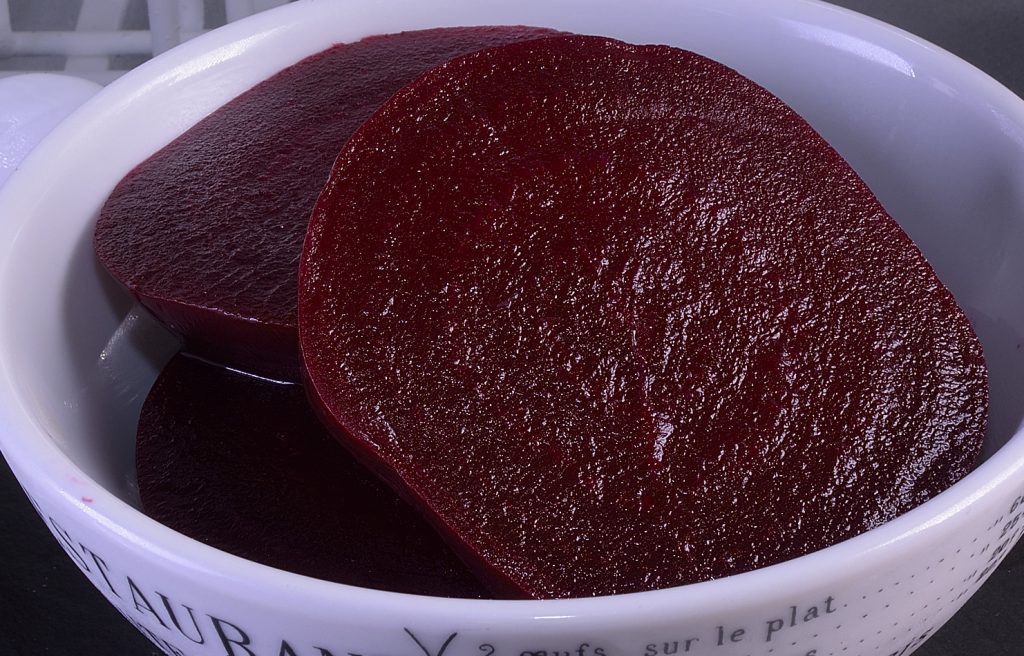
The beets are served cold, dressed with salt, white pepper, a pinch of sugar and vinegar.
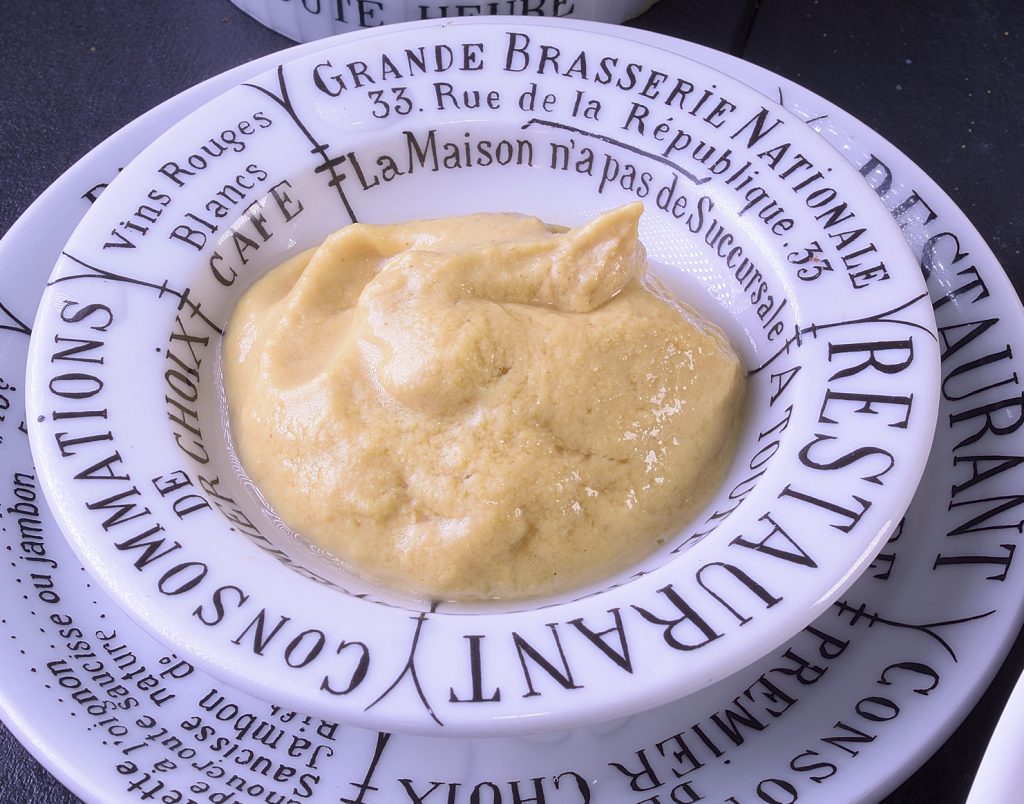
Dijon mustard on the side, of course.
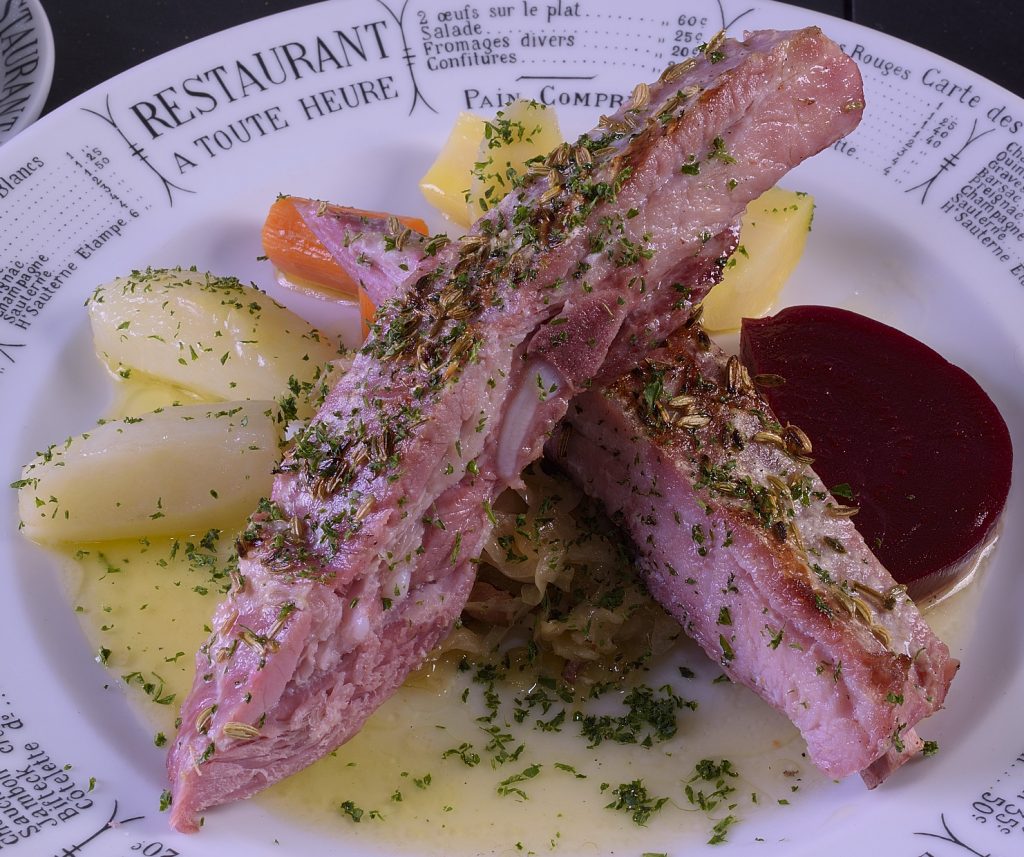
Explore all the angles
Norm King
Make sure to visit our Facebook Group, Sous Vide Resources

